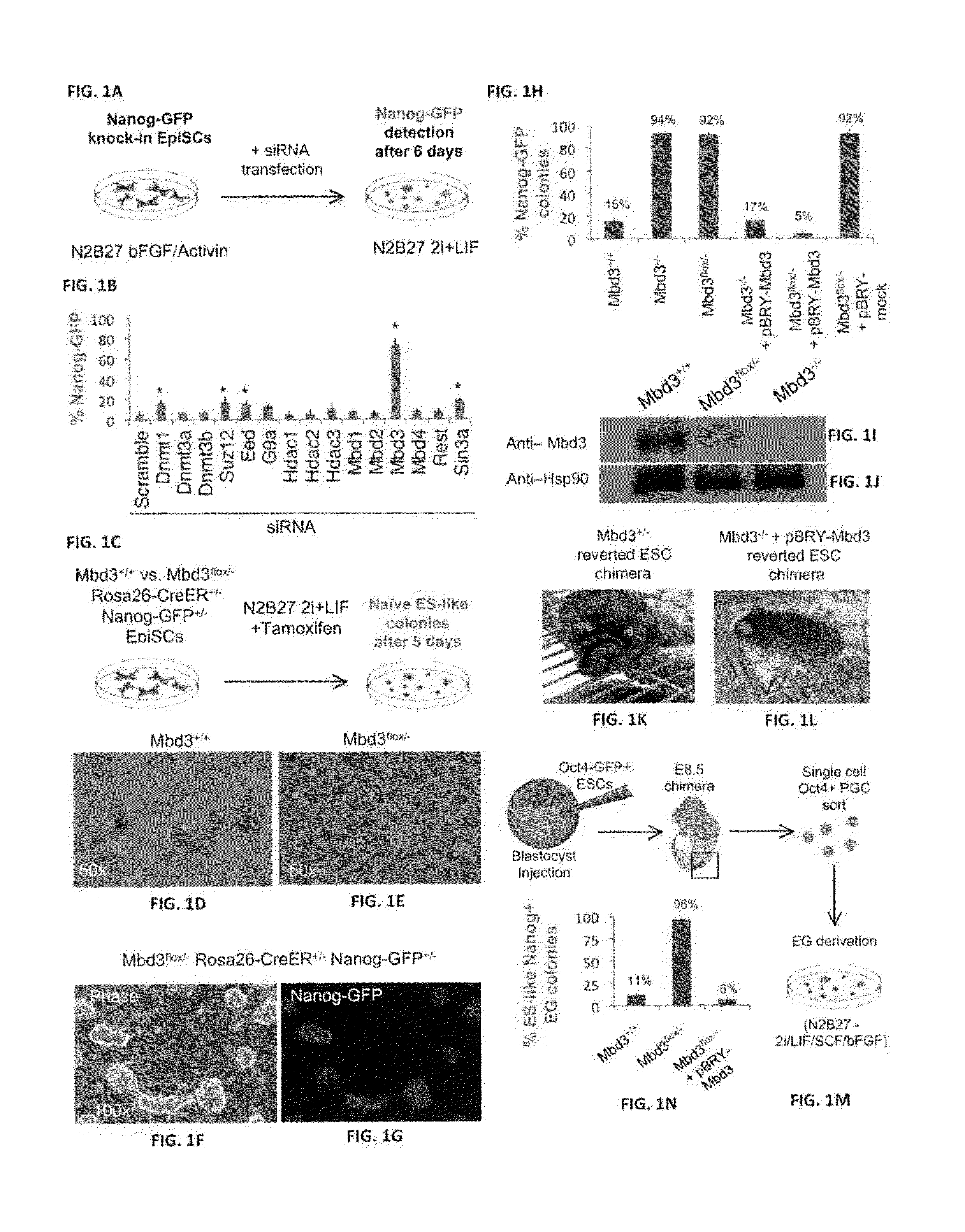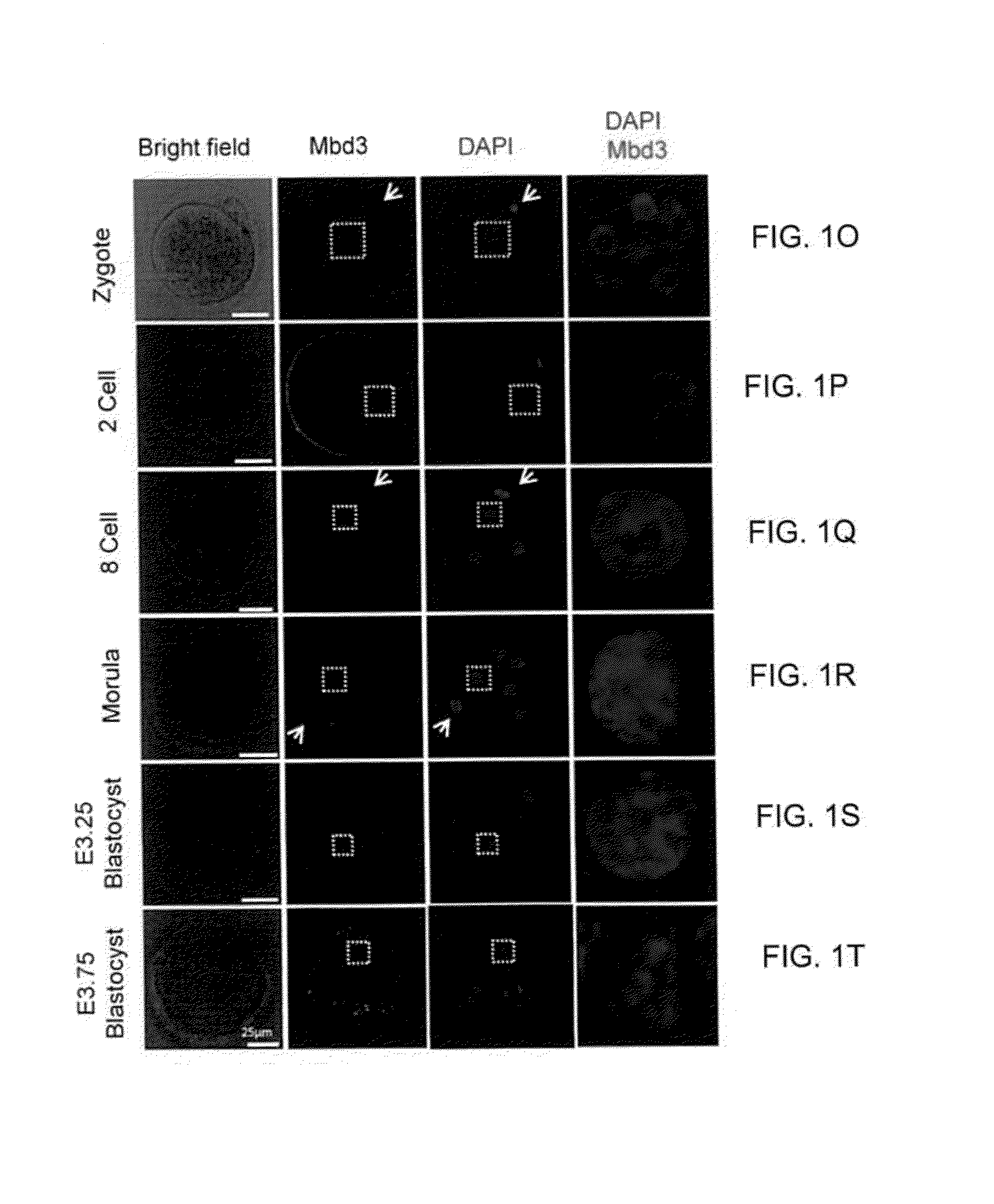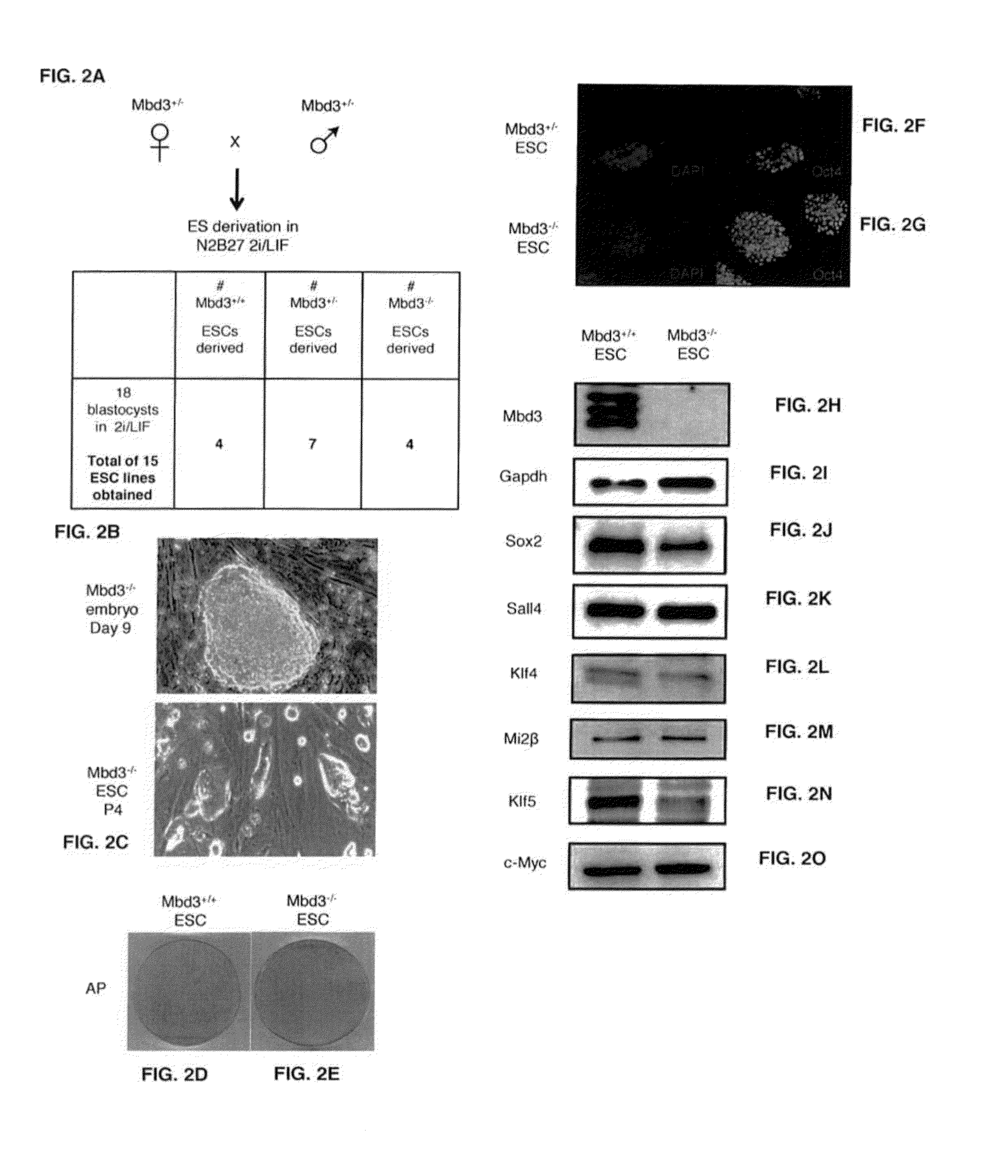Isolated naive pluripotent stem cells and methods of generating same
a technology stem cells, which is applied in the field of isolation can solve the problems of insufficient reprogramming efficiency of somatic cells, inability to generate animal chimeras in time, and inability to meet the needs of naive stem cells
- Summary
- Abstract
- Description
- Claims
- Application Information
AI Technical Summary
Benefits of technology
Problems solved by technology
Method used
Image
Examples
example 1
Boosting Primed Stem Cells Reversion to Naive Pluripotency
[1020]The present inventors set out to test whether additional genetic manipulations may enable radically efficient and homogenous reprogramming towards ground state pluripotency. Recent studies have pointed out the importance of chromatin derepression in converting somatic cells into iPSCs (Mansour et al., 2012; Soufi et al., 2012). In addition, the ground state of pluripotency pertains an open chromatin configuration with reduced levels of repressive chromatin marks (Marks et al., 2012). Therefore, the present inventors aimed to conduct a loss of function screen for epigenetic repressor factors in an attempt to dramatically boost the efficiency of reprogramming to ground state pluripotency. The present inventors initially focused on reverting primed epiblast stem cells (EpiSCs) (Mansour et al., 2012), that in the absence of exogenous transcription factor over-expression, can convert within 7 days into naive pluripotent stat...
example 2
Alleviating Mbd3 Inhibition Facilitates Somatic Cell Reprogramming
[1025]The present inventors tested whether Mbd3 inhibition in somatic cells, that lack expression of endogenous pluripotency markers like Oct4 and are more developmentally restricted in comparison to EpiSCs and PGCs, facilitates their direct conversion to ground state pluripotency at efficiencies nearing 100%. Mbd3+ / +, Mbd3flox / − and Mbd3− / − fibroblasts carrying Oct4-GFP reporter were directly infected with O, K, S, M encoding moloney viruses, and Oct4-GFP reactivation was evaluated by flow cytometry. While Mbd3 depleted cells reprogrammed more efficiently in comparison to wild type cells, only 15% Oct4-GFP cells were obtained from Mbd3flox / − and Mbd3− / − depleted samples (FIG. 37A). This is consistent with a recent study reporting a modest up to 1.5% iPSC formation efficiency following Mbd3 knockdown [Luo, M. et al. NuRD Blocks ReprogAramming of Mouse Somatic Cells into Pluripotent Stem Cells. Stem Cells (2013)]. Infe...
example 3
Numerical Description of OSKM Reprogramming Following MBD3 Depletion
[1031]The present inventors next sought to quantitatively characterize the reprogramming latency distribution for both Mbd3+ / + and Mbd3 samples, and compare it to known deterministic behavior. To do so, the present inventors applied a previously described approach for monoclonal murine Pre-B cell weekly follow-up for reactivation of Nanog-GFP (FIG. 31A) (Hanna, J. et al. Nature 462, 595-601, 2009). A secondary OSKM transgenic NGFP1-iPSC line was rendered transgenic for a DOX inducible Mbd3 knockdown (NGFP1-Mbd3KD) (FIGS. 5B, 5C and 5D). Indeed, only NGFP1-Mbd3KD derived monoclonal B cell populations converted into Nanog-GFP+ iPSCs at day 7 at 100% efficiency (FIGS. 31B-C). Subsequently, during the first 10 days of reprogramming the present inventors conducted daily Nanog-GFP detection on polyclonal NGFP1-control and NGFP1-Mbd3KD B cell populations. The latter cells showed a dramatic increase in reprogramming and fol...
PUM
| Property | Measurement | Unit |
|---|---|---|
| time | aaaaa | aaaaa |
| real time PCR | aaaaa | aaaaa |
| concentration | aaaaa | aaaaa |
Abstract
Description
Claims
Application Information
 Login to View More
Login to View More - R&D
- Intellectual Property
- Life Sciences
- Materials
- Tech Scout
- Unparalleled Data Quality
- Higher Quality Content
- 60% Fewer Hallucinations
Browse by: Latest US Patents, China's latest patents, Technical Efficacy Thesaurus, Application Domain, Technology Topic, Popular Technical Reports.
© 2025 PatSnap. All rights reserved.Legal|Privacy policy|Modern Slavery Act Transparency Statement|Sitemap|About US| Contact US: help@patsnap.com



